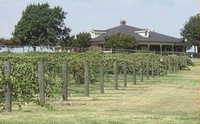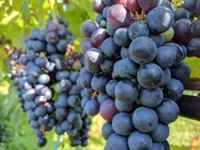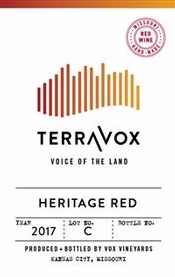Wine lovers these days are eager to indulge in the opportunity to try wines from new grape varieties. We have seen grapes like Assyrtiko, Nerello Mascalese, Godello and Trousseau achieve popularity among avid wine drinkers. These Old World varieties have often languished in obscurity for centuries before their modern popularity. What about the range of North American grapes? How many have sampled the aromas and flavors of Wetumka, Cloeta or Lomanto? These grapes are the result of tireless work by Thomas Munson, the “Grape Man of Texas” who not only catalogued the range of wild grapes growing in the central United States, but also bred hundreds of new varieties, some of which can be found and enjoyed today.

T.V. Munson in the 1880s
Thomas Volney Munson was an early pioneer of American viticulture. More than any other contemporary individual, he was responsible for bringing scientific rigor to the science of botany and viticulture. Early in his career, he became intensely interested in American grapevines and spent many years cataloguing native varieties and breeding new varieties. He thought the grape was “the most beautiful, most wholesome and nutritious, most certain and profitable fruit that can be grown.” His work came to be an essential element in saving the vineyards of Europe from destruction by phylloxera.
Munson was born in Illinois in 1843. Even as a child, he had an avid interest in horticulture. He graduated from the University of Kentucky in Lexington in 1870 and worked as a professor of science and in the nursery business with his father-in-law. He moved his family to Nebraska in 1873 to pursue his viticultural interest and begin a career as an independent horticulturalist. He observed there that the native grape varieties were more resistant to disease than the imported labrusca and vinifera species. Ultimately, however, the droughts, locusts and harsh winter weather in Lincoln convinced him to seek a climate more favorable for grape growing.
Thomas moved to Denison, Texas in 1876 to join his brothers who were businessmen in the area. While he participated in the family real estate business, his heart was with the grapevine and he returned to his lifelong study of native grapes, observing, collecting and cataloguing the diverse range of grapes in the Texas/Oklahoma region and beyond. He covered thousands of miles by rail, horse and foot in his quest to collect and display all the native American grape varieties he could find. Munson displayed his collection at major horticultural exhibitions in the US. He selected the best of the indigenous varieties and worked to improve their characteristics and commercial potential in the nursery and in his experimental vineyard. In all, he developed some 300 grape varieties through crossing and hybridization.

T.V. Munson Memorial Vineyard in Denison Texas
Across the sea, vintners in France had been struggling to combat disease for decades. In the 1840’s, a plague of
oidium or powdery mildew was devastating to vineyard production. The French had brought cuttings of
Vitis labrusca vines to experiment with research to combat
oidium. As history notes, the cuttings brought with them the
Daktulosphaira vitifoliae species of aphid, better known as
Phylloxera vastatrix. This North American aphid munches on the roots of
Vitis vinifera vines, causing root galls to form and opening the path for fungal infections which ultimately kill the vine.
Munson’s work and fame within the viticutural community led French vintners to him when their vineyards were under assault by Phylloxera. When the solution of grafting vines onto resistant North American rootstocks became evident, the French reached out to Thomas Munson for supplies of rootstocks. Munson’s research also showed which vines did best in the limestone-based soils of north Texas. The similarity to the high lime soils of much of France paid great dividends in selecting the proper rootstocks. Munson was honored in France for his work in saving the French vineyards. A delegation was sent from France to Denison to bestow the French Legion of Honor Chevalier du Mérite Agricole. Munson was also a prolific writer of scholarly and practical articles about grapes and grape growing. His authoritative “Foundations of American Grape Culture,” published in 1909 is a true compendium of grape growing knowledge at the turn of the century. The volume has been reprinted and is available as an historic, scholarly work.
Grayson College is a small institution on Denison, Texas. In 1974, Grayson created a Viticulture and Enology Program with the desire to expand on Munson’s pioneering work. They established a Thomas Volney Munson Memorial Vineyard to recognize Munson's contribution to horticulture and to cultivate and preserve many of the Munson grape varieties. In 1988 the T. V. Munson Viticulture and Enology Center opened next to the vineyard. Currently, over 60 of the original varieties are grown in the Memorial Vineyard, in addition to other hybrid and vinifera grape varieties. In order to promote the legacy of Thomas Munson, the college collects cuttings and sends them to interested vintners around the country. Below is an entry from their list of available grapes:
CLOETA. Parentage, America crossed with R.W. Munson. Cluster large, berry large, black, handsome; skin thin, handles well; pulp tender, juicy, sprightly, far better quality than Concord. Vine very vigorous and prolific. Uses: market, table, red wine. Medium late, just after Concord. Ten to fourteen feet, long pruning. Ripens July 10th to 15th at Denison, Texas. Probably the best of all American black grapes.

Cloeta Grapes
If you are interested in sampling some native American vinous heritage, the best source is Vox Vineyards in Weston, Missouri. Owner Jerry Eisterhold is focused on American Heritage grape varieties and has worked with Grayson College cuttings to create a vineyard of Munson varieties. He is growing over forty native varieties. The TerraVox “Voice of the Land” label encompasses varieties like the delicate and complex Cloeta, the full-flavored, black-fruity Lomanto, and the juicy and bright Albania white. They are all in limited quantities. The TerraVox Norton is an excellent rendition of that better-known native variety as well.

A TerraVox Label for Munson’s Heritage Red
As time passes, it’s likely that more growers will look to Munson varieties for something that is new and distinctive for them. There is much more to be done in resurrecting the work of this American viticultural pioneer.